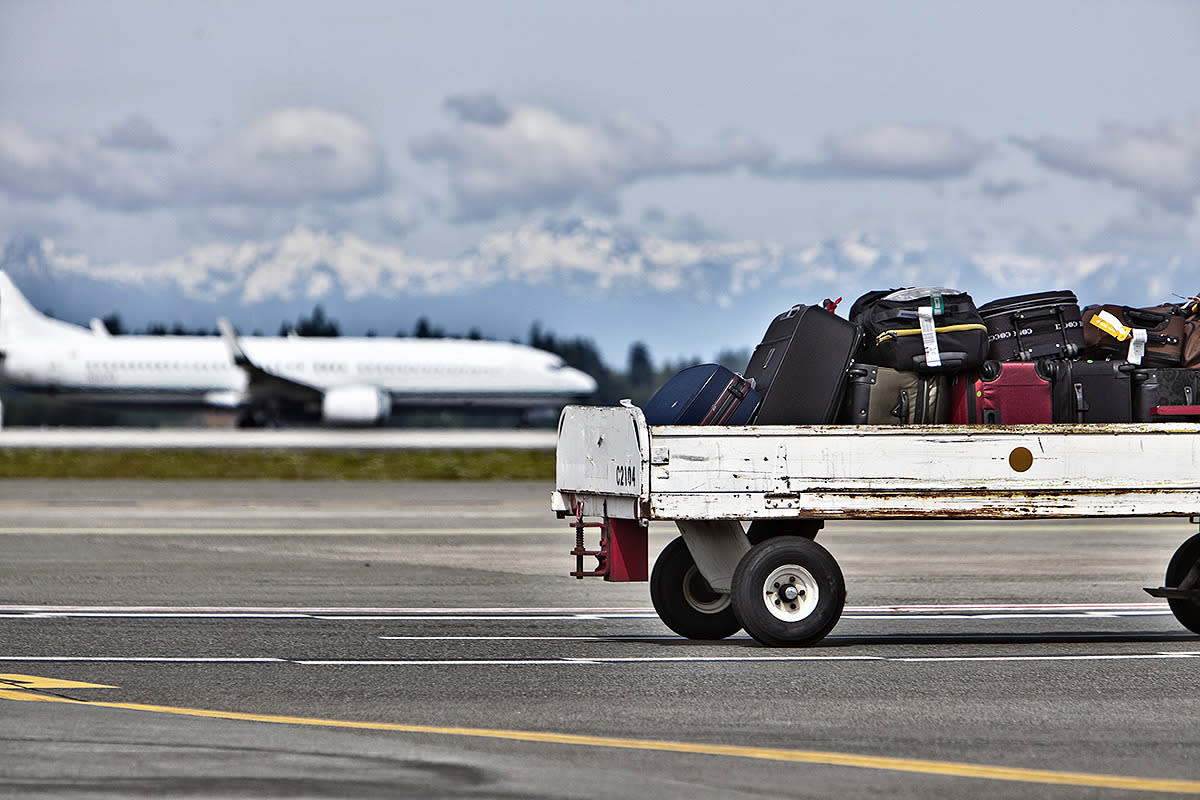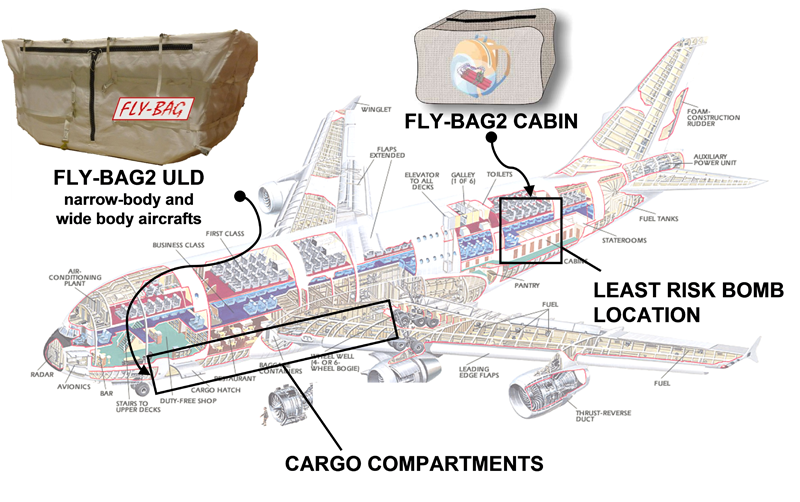Bombproof Liner Tested in Commercial Airplanes

Scientists have invented a way to protect an airplane from an explosion in the luggage hold. (Photo: Francis Zera/Spaces Images/Corbis)
An international team of scientists has figured out how to bombproof the luggage hold of a commercial airliner, so that if a device explodes in someone’s baggage, the plane would remain safe.
The solution is called the Fly-Bag — a flexible, bombproof material that lines the luggage hold. It’s constructed from layers of high-strength, heat-resistant materials, including Aramid, a synthetic fiber used in ballistic body armor. The material’s flexibility enables it to contain the power of an explosion and any blast fragments it might throw off.
The Fly-Bag is being developed by a European consortium including Blastech, a spin-out company from the University of Sheffield, as well as partners from Greece, Spain, Italy, Germany, Sweden, and the Netherlands.

The Fly-Bag lines the inside of a plane’s luggage hold and will insulate it against an explosion. (Illustration: Fly-Bag2)
After testing the “bag” at the University of Sheffield’s blast laboratory, which proved that prototypes could withstand explosions, the team moved on to the next step: real-life controlled blasts in the hold of a Boeing 747 and an Airbus 321.
Related: Airport Insecurity: The 10 Most Terrifying Airport Security Fails
For the experiments — held at Cotswolds Airport in Gloucestershire, England — a bomb was placed in a suitcase in the hold. When the Fly-Bag wasn’t used, the test bomb did what you’d expect: blasted a hole through the fuselage. When it was in place, the Fly-Bag contained the explosion.
Scientists at the University of Sheffield explain the Fly-Bag and show how it works. (Video: University of Sheffield/YouTube)
Dr. Andy Tyas, of the Department of Civil and Structural Engineering, is leading the research at the University of Sheffield. “Key to the concept is that the lining is flexible and this adds to its resilience when containing the explosive force and any fragments produced,” he told his university news. “This helps to ensure that the Fly-Bag acts as a membrane rather than as a rigid-walled container which might shatter on impact.”
Related: Easy Tips for Nervous Fliers: How to Keep Calm on a Plane
And that’s exactly what happened in the tests: The Fly-Bag expanded and contracted with the force of the explosion, but did not break.
The technology can also be adapted to create a “safe room” on a plane, in case the crew spots something or someone suspicious on a flight.
WATCH: Take That, Terrorism! 7 Ways to Travel Without Fear
Let Yahoo Travel inspire you every day. Hang out with us on Facebook, Twitter, Instagram, and Pinterest.

